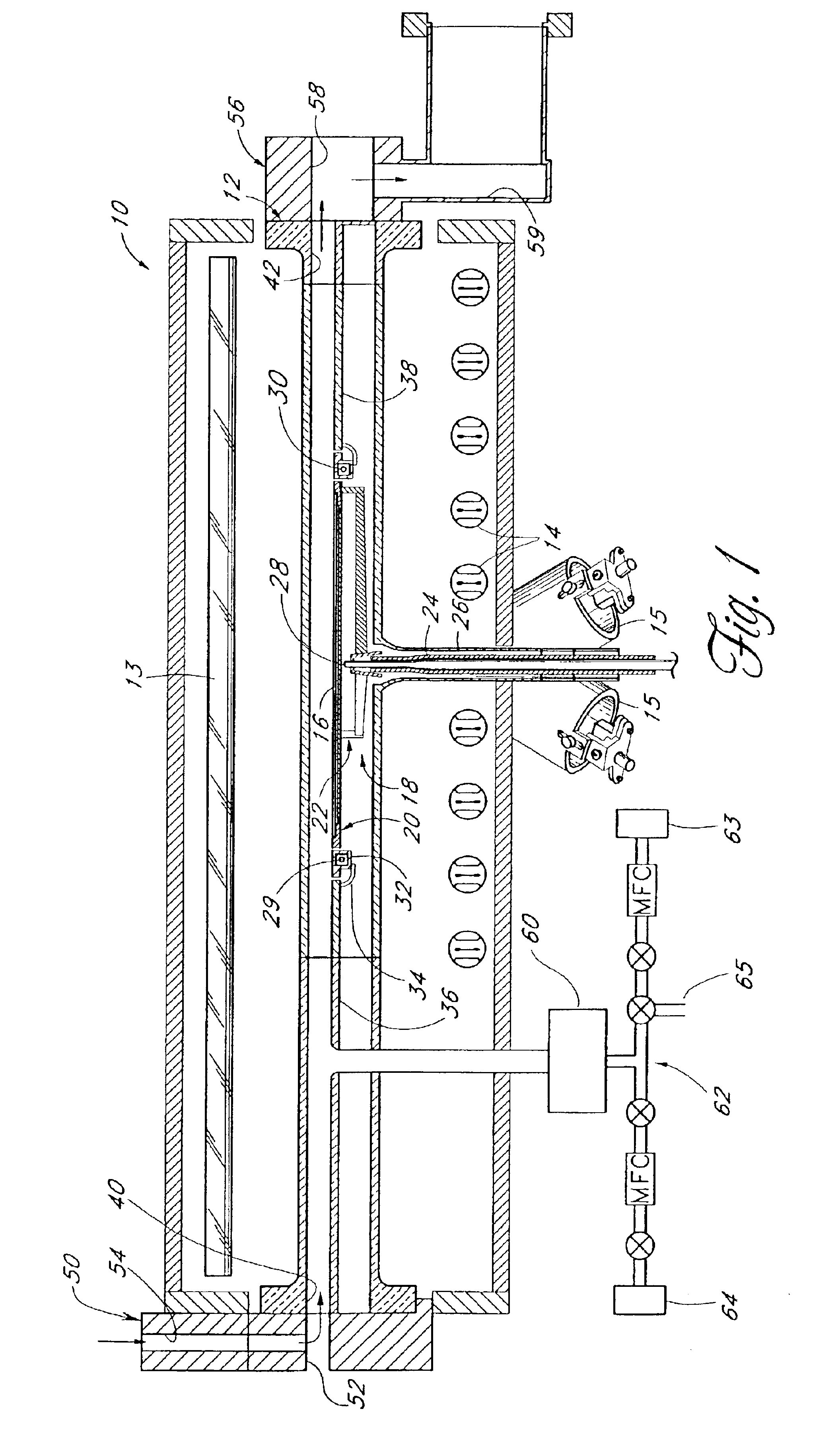Incorporation of nitrogen into high k dielectric film
a dielectric film and nitrogen technology, applied in the field of thin dielectric films, can solve the problems of long overall deposition time, increased fabrication cost, and reduced throughput, and the semiconductor industry is very sensitive to fabrication cos
- Summary
- Abstract
- Description
- Claims
- Application Information
AI Technical Summary
Benefits of technology
Problems solved by technology
Method used
Image
Examples
Embodiment Construction
[0033]While the preferred embodiments are described in the context of transistor gate stacks, the skilled artisan will readily appreciate that the principles disclosed herein have application to a variety of contexts in which thin high k materials require a graded composition, particularly those having special interface needs. An example of such a context is in the formation of capacitors including high k dielectrics, proposed for high density memory cells in random access memory (RAM) arrays. The methods described herein are particularly advantageous for maintaining the stability of and preventing diffusion to or from high k materials.
[0034]Conventional gate electrode deposition over high k gate dielectrics has been found to result in poor electrical performance of the resultant devices. In order to increase the reliability and yield of the integrated circuits including high k dielectrics, the present invention provides a varied composition for a high k dielectric, whereby nitrogen...
PUM
| Property | Measurement | Unit |
|---|---|---|
| temperature | aaaaa | aaaaa |
| dielectric constant | aaaaa | aaaaa |
| dielectric constant | aaaaa | aaaaa |
Abstract
Description
Claims
Application Information
 Login to View More
Login to View More - R&D
- Intellectual Property
- Life Sciences
- Materials
- Tech Scout
- Unparalleled Data Quality
- Higher Quality Content
- 60% Fewer Hallucinations
Browse by: Latest US Patents, China's latest patents, Technical Efficacy Thesaurus, Application Domain, Technology Topic, Popular Technical Reports.
© 2025 PatSnap. All rights reserved.Legal|Privacy policy|Modern Slavery Act Transparency Statement|Sitemap|About US| Contact US: help@patsnap.com



